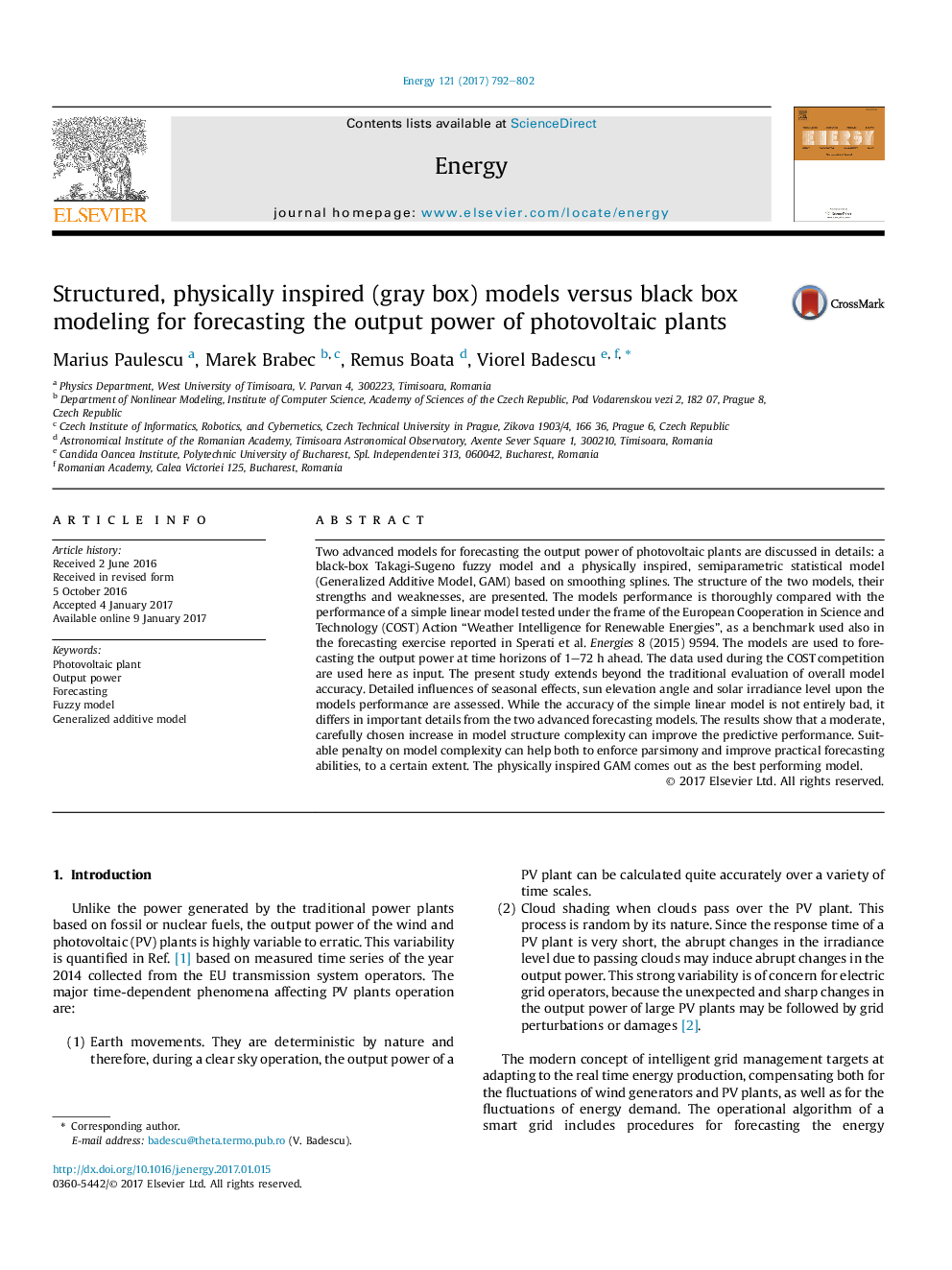| Article ID | Journal | Published Year | Pages | File Type |
|---|---|---|---|---|
| 5476360 | Energy | 2017 | 11 Pages |
Abstract
Two advanced models for forecasting the output power of photovoltaic plants are discussed in details: a black-box Takagi-Sugeno fuzzy model and a physically inspired, semiparametric statistical model (Generalized Additive Model, GAM) based on smoothing splines. The structure of the two models, their strengths and weaknesses, are presented. The models performance is thoroughly compared with the performance of a simple linear model tested under the frame of the European Cooperation in Science and Technology (COST) Action “Weather Intelligence for Renewable Energies”, as a benchmark used also in the forecasting exercise reported in Sperati et al. Energies 8 (2015) 9594. The models are used to forecasting the output power at time horizons of 1-72 h ahead. The data used during the COST competition are used here as input. The present study extends beyond the traditional evaluation of overall model accuracy. Detailed influences of seasonal effects, sun elevation angle and solar irradiance level upon the models performance are assessed. While the accuracy of the simple linear model is not entirely bad, it differs in important details from the two advanced forecasting models. The results show that a moderate, carefully chosen increase in model structure complexity can improve the predictive performance. Suitable penalty on model complexity can help both to enforce parsimony and improve practical forecasting abilities, to a certain extent. The physically inspired GAM comes out as the best performing model.
Related Topics
Physical Sciences and Engineering
Energy
Energy (General)
Authors
Marius Paulescu, Marek Brabec, Remus Boata, Viorel Badescu,
